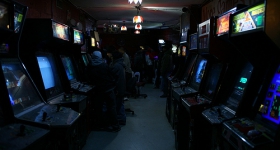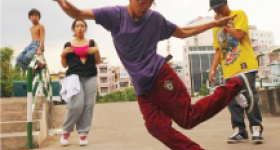When Vanessa Nguyen was trying to learn her mother’s recipes for her own restaurant, she discovered that “a bit of this” and “a handful of that” were her mother’s favorite units of measurement.
“I had to find a way to streamline the process,” Nguyen says.
That amalgamation of new and old produced the delicious dishes that Nguyen now serves at Bosa 1, which is quickly becoming what many say is the best Vietnamese restaurant in Las Vegas’ increasingly diverse Chinatown.
A few years ago, you’d be hard pressed to find a place like Bosa 1 in Las Vegas. “Having roast duck or live fish was a novelty,” says Duncan Lee, a Las Vegas resident of 19 years, since pre-Chinatown days. “Now we have five or six markets serving all the ethnic groups: Korean, Thai, Filipino.”
Located in a strip mall that is an offshoot of Chinatown’s original hub, Bosa 1 resides alongside an Ethiopian grocery, a Chinese seafood restaurant, a Korean karaoke bar and a Filipino restaurant. It’s all part of the Asian population boom that occurred after James Chen laid the groundwork with Chinatown Plaza in 1995, believing that if he built it, they would come.
“James’ vision was for [Chinatown] to continue to grow and grow,” says Vida Chan Lin, president of the Asian Chamber of Commerce.
Although this Chinatown came about through nurture rather than nature, it’s slowly beginning to settle into a community. A program started by the Asian Chamber of Commerce offers bilingual assistance for those seeking home loan modifications in order to prevent the loss of their houses. (Nevada has led the country in foreclosure rates for the past three years.)
Lee, a prominent local figure, has been attempting to establish a kind of support group for Chinatown parents. “Las Vegas being a very transient town, a lot of the parents might not know how the school system works,” Lee says.
In a city of nomads, the imperative to establish a strong central neighborhood structure is even greater. But although the area along Spring Mountain Road has shown growth — it now extends about four miles from the Strip to include a new mini-Koreatown — a long road lies ahead to develop a neighborhood that, like other Chinatowns, provides local Asian residents with a backbone of community and social resources.
“That has been a big negative as far as our community concerns, because we don’t have a community center,” says Rozita Lee, who works out of her home to connect those seeking social services to the government agencies that provide them. “It’s OK to operate from home, but it would be better if we had an office — a building, a place to play sports, to engage with one another in an environment that is safe.”
According to Lin, the lack of physical community spaces and community-specific associations can be attributed to one thing: lack of funding. “We almost got [a community center] two years ago, but the economy went kaput. Investors pulled out because the economy went down,” Lee says.
Even with the setbacks in its push for community growth, the economic and social progress of Las Vegas’ Chinatown is already apparent; the future of Chinatown is looking up. It has “turned a run-down part of town into a beautiful commercial industry,” Lin says.
As Nguyen would say: If the product is good, the price is right and the people are there to consume it, why wouldn’t it work?
It’s a gamble Las Vegas’ Chinatown is willing to take.
Kimberly Lien is a Hyphen editor. Her last piece was about foosball champion Sergie Aragones.









Comments